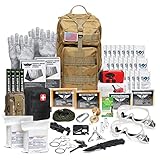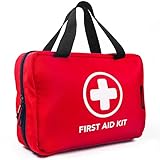When building a bug-out bag for your family, remember that you should stock it with supplies with the assumption that you won’t be returning home or will be away for a very long time. Essentially bugging out is leaving your home when it is no longer safe to be there.
So, when preparing for a potential bug-out situation, it’s important to keep in mind the following item types: food, clothing, medical supplies, cooking supplies, shelter, tools, and ways to gather water. Due to the number of supplies needed, it is wise to plan for every family member to have their own bug-out bag.
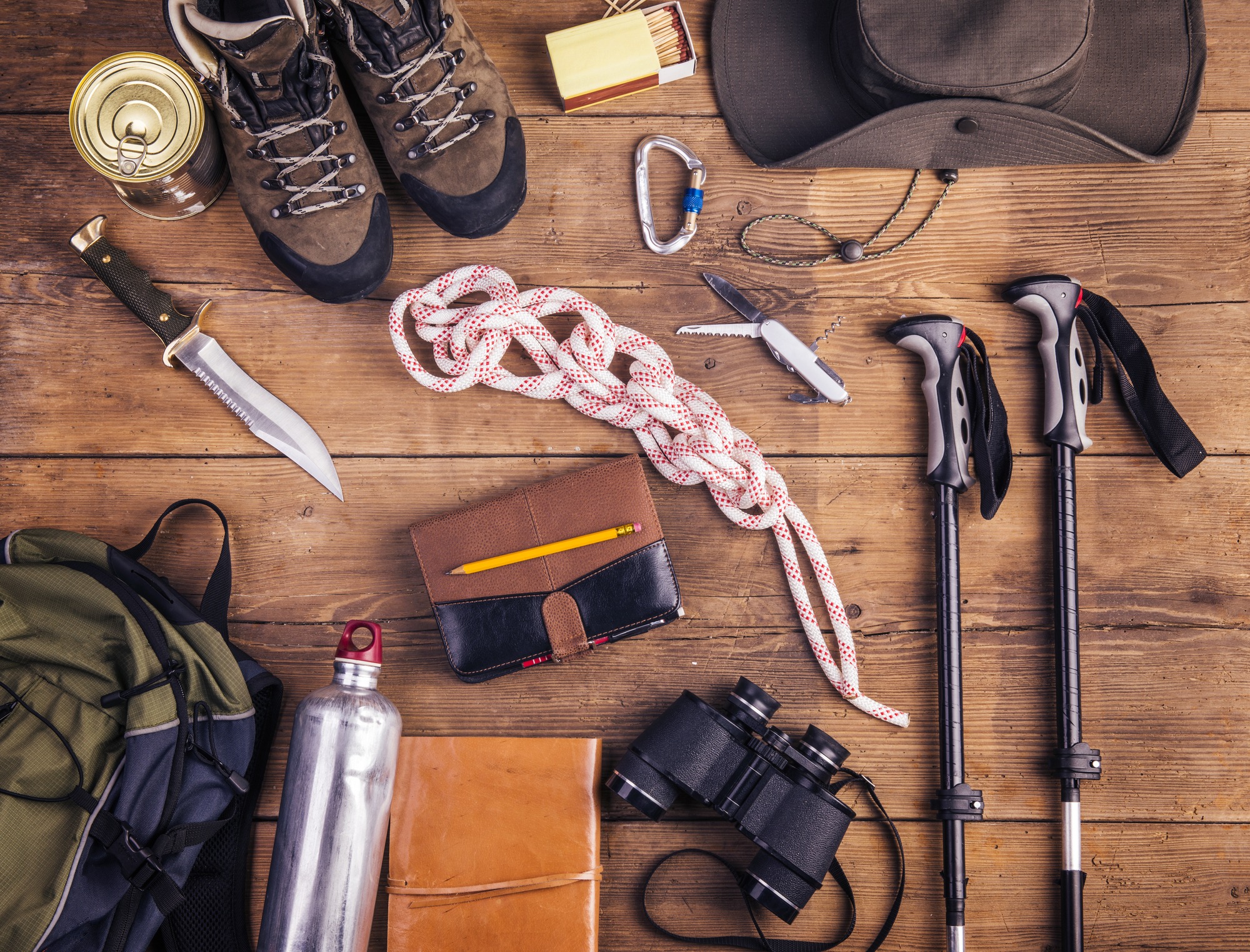
The list below is divided into five main categories with the top five items needed for each. Note that this is only a list to get you started. Please take into account any needs specific to your family when building your bug-out bags.
Your Bug-Out Bag Should Contain Nutrition and Cooking Supplies
- Water supplies: Hydration supplies are a top priority for any emergency situation. While you can survive roughly three weeks without food, you can only survive 72 hours without water. The minimum water intake someone needs in a survival situation is one liter per day. Make sure to have supplies like water bottles in either collapsible or canteen style, water filters or purification systems like the LIFESTRAW, and water purification tablets.
- Fire starting tools: Pack waterproof matches, a stormproof lighter, and a magnesium fire starter stick for starting fires. Aim for three fire-starting tools just in case one stops working or runs out. Cotton balls that have Vaseline on them are also great fire-starting tools.
- Mess kit and a camp stove: A quality mess kit will provide basic cooking and eating utensils necessary for emergency situations. When selecting a camp stove, look for styles that do not require fuel sources but rather burn small sticks and pine cones that can be collected along the way.
- MRE’s and energy bars: Having three days’ worth of pre-packaged food is a good plan for making it past the disaster zone. Be prepared for scarce and contaminated food and water supplies in your immediate area.
- Fishing kit, snare wire, and edible guide: Having supplies that help you catch and eat food in the wild is essential when the pre-packaged food starts running low. The fishing kit should include a fishing line, hooks, a few lures, and small bobbers. The snare wire will help catch forest animals, and an edible guide is a helpful tool for avoiding poisonous plants.
Your Bug-Out Emergency Bag Should Contain Shelter Items

- Sleeping bags: Make sure your sleeping bags are rated for zero to 20-degree temperatures or feature a modular sleep system. Since you never know when disaster will strike, being prepared for a variety of weather conditions is essential.
- Tarps: Tarps are an excellent multi-purpose shelter tool. Lay them on the ground and drape them over a branch for a make-shift tent for an added layer of protection from the elements. The ability to stay well-rested should be a high priority during tough circumstances.
- Duct tape and paracord: Duct tape and paracord are excellent all-purpose items, plus they are small and easy to carry. These will be essential items for fast mending and a multitude of other uses. For example, paracord can be used to set traps, create a tourniquet, start a fire, and even replace broken shoelaces.
- Ponchos: Shelter doesn’t only apply to sleeping at night. Having protection from the elements while hiking to your next stop-down location is also important. Ponchos are easily packable and can cover both you and your pack during a trek.
- Tent: If you are able to carry a tent, it is an excellent option to have in addition to the tarps. A tent offers better protection from weather elements and wild animals. However, they can also take up a lot of space in your bug-out bag and can be an expensive addition if you are prepping on a budget. Ultimately, depending on your environment and existing survival skills, this may be just an option for some, but necessary for others.
You Should Have Tools when Bugging-Out
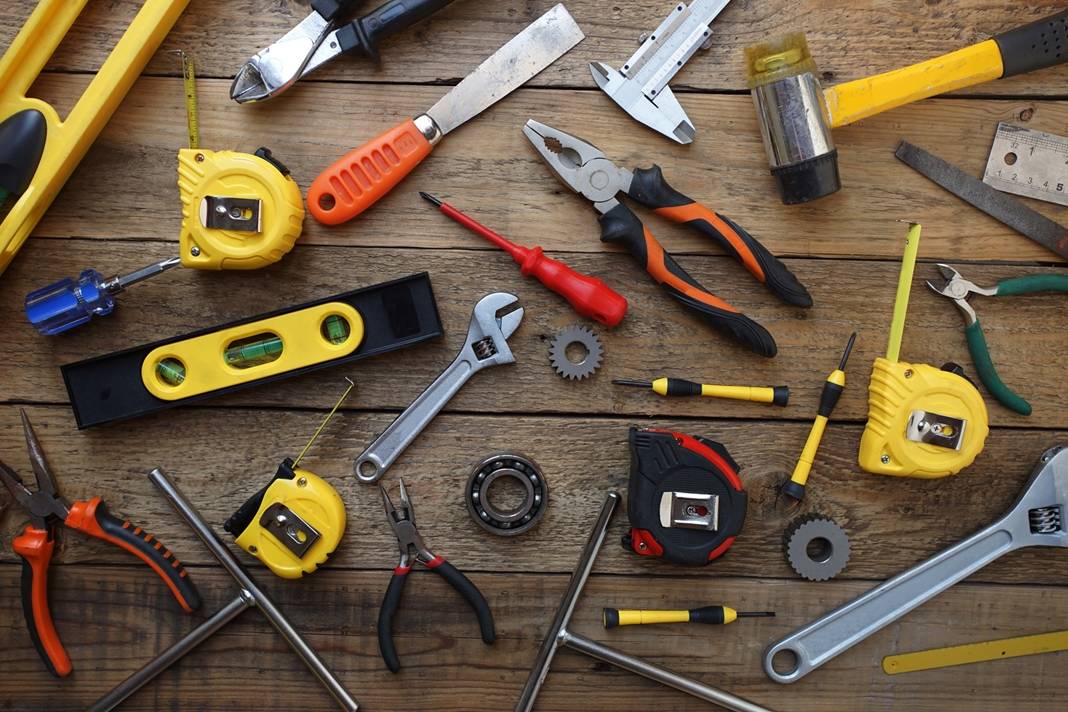
- Survival knife: A survival knife and a multi-tool, like a Leatherman, are essential survival tools. A survival knife will aid in collecting tinder, making cordage, building shelter, and starting fires. It can also be used for hunting and preparing games.
- Hatchet: Having a hatchet in your survival kit is also a must. You can use it to chop small trees, split wood to make fire, and a variety of other uses. A hatchet can also be used as a hammer by using the non-blade side.
- Compass: A compass should be a given in any bug-out bag. Make sure it is compact, lightweight, and has a solid construction. Your survival compass should also be water-resistant, so it can withstand a variety of conditions.
- Emergency tools: Items like whistles and signal mirrors are solid low-tech communication tools. You can use the whistle for verbal distress calls, and the signal mirror for visual cues like Morse code or simple flashing. Glow sticks are an inexpensive and easy way to create a location mark, highlighting various trip hazards, and as navigation, signs to preserve lanterns and flashlights at night.
- Hand & foot warmers: In addition to their intended use for warming hands and feet, warmers have several other survival uses that make them a great addition to your survival pack. They can dry out wet boots, keep hot drinks warm longer, aid hypothermia treatment in an emergency, and also melt snow to make it drinkable.
Don’t Forget Clothing and Hygiene Items from Your Bug-Out Bag

- Clothing and sewing kit: Your bug-out bag should contain clothing appropriate for your environment. Make sure this includes, underwear, good wool socks, thermal long underwear, and appropriate outer layers. Having a few high-quality items is important to comfort and survival in the elements. A small sewing kit is also useful for mending clothing, tents, and other cloth items.
- Mosquito net: Not only can a mosquito net be used as insect netting, but it can also function as gauze for medical needs, as well as an emergency dust mask. You can also use it as a fishing and bait net and as a part of your water filtration process.
- Toiletry items: They are often overlooked in survival situations, but simple items like toothbrushes, toothpaste, combs, and deodorant go a long way in caring for basic needs and also bringing some sense of normalcy to an abnormal situation.
- Hiking boots: A solid pair of hiking boots or shoes is a must for emergency preparedness. You want footwear that can withstand a variety of situations and keep your feet well protected. Look for options that are waterproof and built to last. Protecting your feet is a top priority when modes of transportation are limited or unknown.
- Hats and bandanas: Aside from their typical uses for head protection and temperature regulation, hats and bandanas can also provide other key survival functions. Bandanas specifically can be used as a face mask, trail marker, cleaning cloth, or signal flag. Hats can serve many of the same functions as a bandana and also be used as a layer of water filtration and a glove or potholder.
A Bug-Out Bag Must Contain Medical Supplies
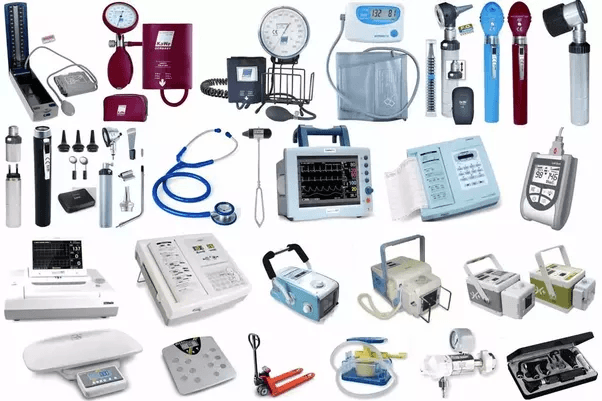
- First aid kit: A first aid kit is a necessity in your bug-out bag. Make sure it is prepped with an assortment of band-aids, gauze, alcohol pads, bandages, instant cold compresses, tweezers, and splinting materials. Having access to quality first aid materials can make a massive difference in an emergency situation.
- First aid guide: Having a first aid guide in addition to your kit is also a smart plan. It may be difficult to respond to an emergency medical situation at the moment and having step-by-step instructions at hand can help take the guesswork out of a tense situation.
- Prescription medications: If anyone in your family requires prescription medications, make sure you have backup supplies packed and ready to go. Items like inhalers, blood pressure medications, and insulin are key to survival situations.
- Allergy medications: Since you will likely be outdoors in a bug-out situation, having allergy medications and creams on hand will be helpful. If you encounter nettles or other plants that trigger an allergic reaction, it is important to be prepared.
- Antibiotics: A bug-out situation comes with a lot of unknowns and being prepared with antibiotics is very important. In an emergency situation, you may not have access to antibiotics if you or a member of your party becomes ill or injured. These are best stored in the refrigerator until needed and remember to check the expiration date and update your supplies as necessary in advance.
Prepare for an Emergency Situation with Your Bug-Out Bag!
Hopefully, this list helped you prepare your first bug-out bag or enhance your existing setup. Please take into account your family’s needs and the living environment when dialing in each category. Remember to check your kit at least once a year and replace expired items.
Katy Willis is a writer, lifelong homesteader, and master herbalist, master gardener, and canine nutritionist. Katy is a preparedness expert and modern homesteader practicing everyday preparedness, sustainability, and a holistic lifestyle.
She knows how important it is to be prepared for whatever life throws at you, because you just never know what's coming. And preparedness helps you give your family the best chance to thrive in any situation.
Katy is passionate about living naturally, growing food, keeping livestock, foraging, and making and using herbal remedies. Katy is an experienced herbalist and a member of the CMA (Complementary Medical Association).
Her preparedness skills go beyond just being "ready", she's ready to survive the initial disaster, and thrive afterward, too. She grows 100% organic food on roughly 15 acres and raises goats, chickens, and ducks. She also lovingly tends her orchard, where she grows many different fruit trees. And, because she likes to know exactly what she's feeding her family, she's a seasoned from-scratch cook and gluten-free baker.
Katy teaches foraging and environmental education classes, too, including self-sufficient living, modern homesteading, seed saving, and organic vegetable gardening.
Katy helps others learn forgotten skills, including basic survival skills and self-reliance.
She's been published on sites such as MSN, Angi, Home Advisor, Family Handyman, Wealth of Geeks, Readers Digest, and more.
Last update on 2024-07-27 at 00:25 / Affiliate links / Images from Amazon Product Advertising API




